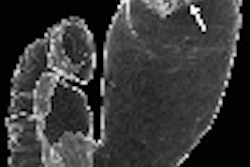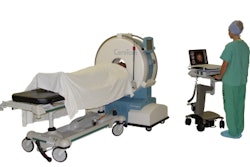Dear CT Insider,
MRI is still king in head and neck imaging, but thin-section MDCT appears to have mounted an effective insurgency, winning the hearts and minds of clinicians in a growing number of applications.
CT's speed, accuracy, and availability are earning it points among surgeons, according to radiologist Dr. Nancy Fischbein from Stanford University in California. And while MDCT cannot provide MRI's exquisite soft-tissue detail, it does offer reliable presurgical evaluation, especially when multiplanar reformatted images are used to visualize complex anatomic relationships below the skull base.
CT is particularly well-suited to imaging vocal cord pathologies, laryngeal cancers, and cases of airway compromise, Fischbein said at the 2005 International Symposium on Multidetector-Row CT. Get the rest of the details in this issue's Insider Exclusive.
In today's CT Digital Community, new studies conclude that simple steps, such as innovative patient positioning and water contrast, can improve MDCT's ability to evaluate gastric cancers. As in head and neck, there's a better test for some patients -- the gastroscope is still the method of choice for detecting the subtlest mucosal lesions -- but improved distension in the stomach helps CT examine the depth of cancer invasion and its relationship to other organs.
Also in this issue, don't miss the eye-opening 256-slice CT heart images brought to you by researchers from the Chiba University Graduate School of Medicine in Japan, who will discuss their work at the upcoming 2005 RSNA meeting in Chicago.
And in what may be the largest whole-body CT study to date, a team from the University of California, San Diego, found that the exam revealed a wide range of previously unknown pathologies. The study is unlikely to sway the debate about the wisdom of such scans in asymptomatic patients, but does provide food for thoughtful folks to chew on.




















